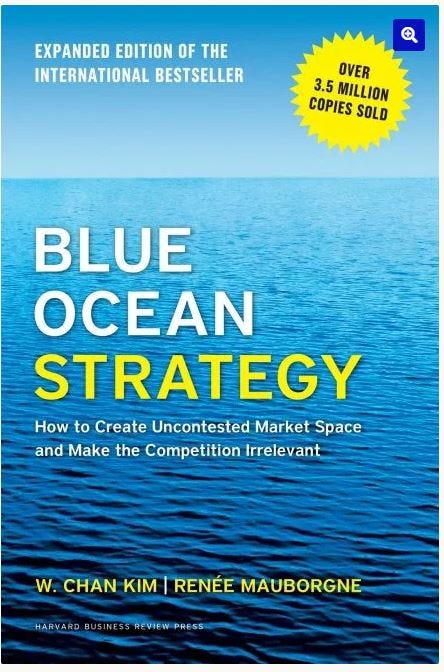An Ocean is a very large expanse of the sea , it is vast and its depth is still being revisited by man every time. I’m sure most of us know why the ocean is blue.. its for simple reason of the sun’s white light entering the ocean & blue getting returned. The are portions of light like red , orange and yellow that just gets absorbed so some times you could possibly see a red ocean. In the market universe imagine 2 sorts of oceans Red & Blue. Red ocean represents the industries existing today and blue oceans represent industries not in existence today i.e known and unknown markets.
Competition does exists in industries ….especially in known markets…it becomes red due to the fight cause of the shrinking pool of profit. One may ask if this happens in a monopoly or oligopoly market? The fact remains as to how does one create an uncontested market space and make competition Irrelevant.
W Chan Kim & Renee Mauborgne makes an attempt to provide a systematic approach to making competition irrelevant in their book.This is definitely a blue ocean as most studies done in the past was based on company and industries. Here with a study 150 strategic move spanning 130+ years they have tried to help in providing ways to create blue oceans and their impacts.
The key here is Strategic Move which is the set of actions and decisions involved in making major market creating a business offering.
In this book one would dwell in cornerstone of blue ocean strategy which is Value Innovation, which focus’s on making competition irrelevant by creating value for the buyer & company.As you read along you would find it interesting as the book does introduces the tools and frameworks for creating blue oceans , In addition to this the 4 guiding principles for successful formulation looking across 6 conventional boundaries. Strategy does involve both opportunity and risk. The book uses visualization approach towards tackling risk which helps to create a blue ocean and also to maximize it.They say strategy is in the design which addresses business model risk and the sequence to create the strategy. The book then talks about leadership and introduces the concept of tipping point leadership which help leaders and managers to overcome hurdles which is a key to creating, sustaining and renewing blue oceans.
I would recommend reading this book if you want ideas and anecdotes and think there is a process to strategy.I’m looking forward to reading hopefully the part 2 of Blue Ocean Strategy and Blue Ocean Shift where more companies would have been analysed especially in the digital era of technology(2000–2020) and blue oceans designed ,created, implemented &justified with outcomes and there by find a company or industry which is perpetually excellent.
